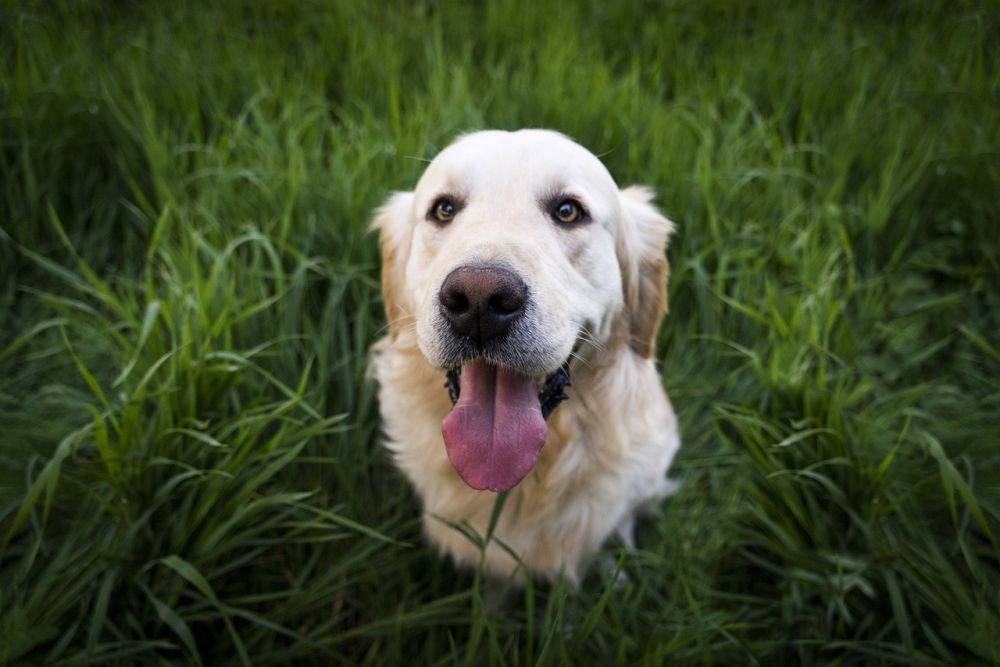
Dog Breed Guide: Golden Retriever
A friendly, easy-going dog and a fantastic family pet make the Golden Retriever an exceptionally popular breed. He is highly intelligent and is excellent for sniffing out drugs, tracking and retrieving game for hunters, and also as a therapy or assistant dog for the ill, elderly, or disabled. Extremely athletic, the Golden Retriever also does very well in agility sports, as well as obedience competitions.
History of the Golden Retriever
Legend had it for many years that the Golden Retriever was a descendant of Russian Sheepdogs that were bought from a circus, when in fact, the breed was created in Scotland at the estate of Sir Dudley Marjoribanks, known later as Lord Tweedmouth.
Like many of the elite of that time, Tweedmouth bred many types of animals, his aim being to perfect certain breeds. He was a keen waterfowl hunter, and according to his breeding records from 1835 to 1890, his goal was to breed a talented retriever with a keen sense of smell that, unlike the spaniels and setters that were used in those days, would obey his hunting companion’s commands without fail, and act upon them immediately. He also wanted the dog to be a faithful and even-tempered family pet.
His breed first became known for its exceptional skills in the hunting field, one of the most famous being Don of Gerwyn, which won the International Gundog League trial in 1904. The Golden Retriever was officially recognized in 1911 by the Kennel Club in the UK as a distinct breed, classified at the time as “Retriever - Golden or Yellow.” It was only in 1920 that the breed became known officially as the Golden Retriever.
General Physical Characteristics of Golden Retrievers
Classed as a sporting dog, the Golden Retriever stands at about 1’9“ to 2’ tall at the shoulder and weighs between 55 and 75 pounds. They normally reach their full height when they’re a year old and their adult weight by age two. Their coats, which can be various shades of gold and straight or wavy, are beautiful, l but they shed a lot, especially during fall and spring, so daily brushing is essential. Even though a very friendly pet, he is large and boisterous, and can very easily bump over small children by accident.
Character and Temperament of the Golden Retriever
One of the most popular dog breeds in the world, the Golden Retriever is handsome, intelligent, social, and extremely loyal. He is a happy dog and always ready to play, romp around with the children, or go jogging and hiking with his owner. He has a sweet, calm nature, and since he was bred to work with people, he is always ready to please his owner.
Golden Retrievers thrive on the noise and commotion of children and, with proper training and introduction, will get on very well with any other types of pets, too.
Lifespan of Golden Retrievers
The lifespan of the Golden Retriever is anything from 10 to 12 years.
Common Health and Personality Issues in Golden Retrievers
Generally, a healthy breed, Golden Retrievers - like most other breeds, are prone to certain diseases, although not all of them will suffer any or all of the following:
- Hip and elbow dysplasia
- Cataracts
- Subvalvular Aortic Stenosis – a heart condition that can result in fainting or sudden death. A vet can detect the illness and provide proper medication to keep it under control
- Progressive Retinal Atrophy, or (PRA) – diseases that cause the gradual deterioration of the retina
- Allergies
- Von Willebrand’s Disease – a genetic blood disorder that causes problems with the blood’s ability to clot
- Osteochondrosis Dissecans or (OCD) – an orthopedic condition caused by improper development of the cartilage, usually occurring in the elbows, but can also affect the shoulders
- Gastric Dilatation-Volvulus – a life-threatening condition, also referred to as “bloat”, that usually affects large, deep-chested dogs.
- Hypothyroidism – a disorder of the thyroid gland
- Hemangiosarcoma – an extremely dangerous type of cancer that starts in the spleen and lining o blood vessels. Usually affects middle-aged and old dogs
- Osteosarcoma – a malignant bone cancer that often occurs in large and giant breeds
- Epilepsy – a brain condition that causes periodic convulsions and seizures. Depending on how often they occur, and the severity of the seizures, a vet can decide which medication to provide, if any.
Golden Retrievers are active dogs, so they should have at least 20 to 30 minutes of vigorous exercise every day to make sure that they’re relaxed and mellow during the time that they’re inside.
